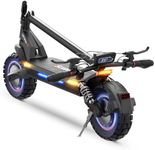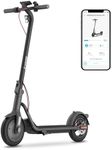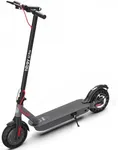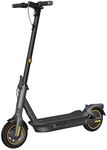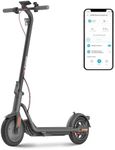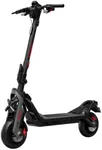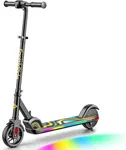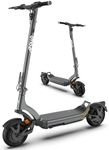Buying Guide for the Best Electric Kick Scooter For Hills
Choosing an electric kick scooter for riding on hills requires a bit more attention to certain features than picking a scooter for flat city streets. Hills put extra strain on the motor and battery, so you want a scooter that can handle inclines without losing too much speed or running out of power quickly. Think about the steepness of the hills you plan to tackle, how far you need to travel, and your own weight, as these factors all affect performance. It's important to balance power, range, and comfort to make sure your rides are smooth and enjoyable.Motor Power (Wattage)Motor power, measured in watts (W), tells you how strong the scooter's engine is. This is especially important for hills, because a more powerful motor can climb steeper slopes without slowing down too much. Scooters with lower wattage (under 300W) are best for flat surfaces and gentle inclines, while mid-range motors (300W-500W) can handle moderate hills. For steep hills, look for scooters with motors above 500W. If you live in a hilly area or are a heavier rider, a higher wattage will make your rides much easier and more enjoyable.
Battery Capacity (Ah or Wh)Battery capacity, shown in amp-hours (Ah) or watt-hours (Wh), tells you how much energy the scooter can store. A bigger battery means you can ride longer distances and the scooter can deliver more power to the motor, which is important when climbing hills. Small batteries (under 7Ah or 250Wh) are fine for short, flat trips, but for hills and longer rides, look for higher capacities (above 10Ah or 350Wh). If you plan to ride up hills often or go on longer journeys, a larger battery will help you avoid running out of power mid-ride.
Hill Climbing Ability (Grade Percentage)Hill climbing ability is often shown as a percentage, like '15% grade,' which means the scooter can handle a hill that rises 15 meters for every 100 meters forward. This spec is important because it tells you how steep a hill the scooter can climb without struggling. Scooters with a hill grade of 10% or less are best for gentle slopes, while those rated for 15% or more can handle steeper hills. Think about the steepest hills you need to climb and choose a scooter with a hill grade rating that matches or exceeds that.
Weight CapacityWeight capacity tells you the maximum rider weight the scooter can safely carry. This matters for hills because a heavier load makes it harder for the scooter to climb. Most scooters support 220-265 lbs (100-120 kg), but some heavy-duty models can carry more. If you are close to or above the average weight limit, look for a scooter with a higher capacity to ensure good performance on hills and to avoid putting too much strain on the motor and battery.
Tire Size and TypeTire size and type affect how well the scooter grips the road and absorbs bumps, which is important for safety and comfort on hills. Smaller tires (under 8 inches) are lighter but can struggle on rough or steep terrain, while larger tires (8-10 inches or more) provide better stability and grip. Pneumatic (air-filled) tires offer more cushioning and traction, which is helpful for hilly or uneven surfaces, while solid tires are more puncture-resistant but less comfortable. If you plan to ride on steep or bumpy hills, larger pneumatic tires are usually the best choice.
Braking SystemThe braking system is crucial for safety, especially when going downhill. Scooters may have electronic, disc, drum, or foot brakes. Electronic brakes are low-maintenance but may not be strong enough for steep descents. Disc and drum brakes provide more stopping power and are better for hilly areas. If you expect to ride down steep hills, look for a scooter with at least one strong mechanical brake (like disc or drum) in addition to any electronic brakes, so you can stop quickly and safely.
